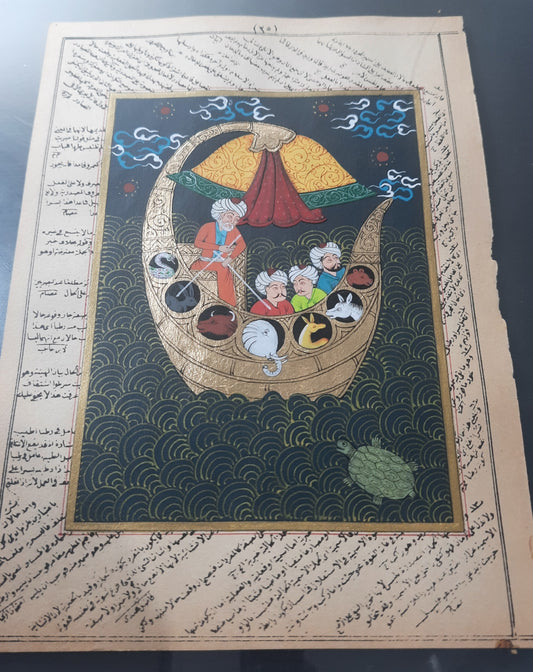Collection: Islamic Religious Hand- Painted Miniature Paintings
Ottoman painting and miniature art represent a rich and intricate facet of the Ottoman Empire's cultural heritage. Originating in the 14th century, this art form flourished under the patronage of sultans and the elite, serving both decorative and documentary purposes. Ottoman miniatures are characterized by their detailed and colorful depictions of court life, historical events, and literary scenes, often found in manuscripts and albums known as "muraqqa."
Ottoman Painting and Miniature Art: An Overview
Ottoman miniature painting is distinguished by its meticulous attention to detail, vibrant colors, and the use of gold leaf. These artworks typically illustrated manuscripts, providing a visual narrative to accompany texts. The miniatures served not only as art but also as a means of recording and preserving the empire's history, culture, and achievements. The artists, known as "nakkaş," worked in studios called "nakkaşhanes," where they adhered to strict artistic traditions and techniques passed down through generations.
Current Situation of Ottoman Miniature Art
Today, Ottoman miniature art is highly revered and continues to be studied and appreciated by historians, art enthusiasts, and collectors worldwide. Museums and galleries in Turkey and across the globe, such as the Topkapi Palace Museum in Istanbul, house extensive collections of these exquisite works. Additionally, there has been a resurgence of interest in this art form, with contemporary artists drawing inspiration from traditional techniques and themes to create modern interpretations.
Efforts to preserve and promote Ottoman miniature art have also intensified. Restoration projects aim to maintain the integrity of ancient manuscripts and miniatures, while academic programs and workshops seek to educate new generations about this unique art form. As a result, Ottoman miniature art remains a vibrant and influential part of the cultural heritage, offering insights into the rich history and aesthetics of the Ottoman Empire.
In conclusion, Ottoman painting and miniature art are not just relics of the past but continue to inspire and captivate audiences today. Their enduring beauty and historical significance ensure that they remain a cherished aspect of global artistic heritage.
-
Islamic Art / Bird Painting , Parrot Painting / Islam Wall Art Frame Unique Precious Very Lovely Miniature / Collectible Rare Painting
Regular price $99.00 USDRegular price -
Rare Islamic Manuscript The Noah's Ark Collectible Rare Painting For Art Collectors
Regular price $150.00 USDRegular price -
Islamic Astronomers Miniature Painting - Hand-Painted Manuscript Art Depicting Lunar and Celestial Studies
Regular price $125.00 USDRegular price -

Manuscript Illustration Art Vintage Ottoman Style Home Decor, Turkish Wall Hangings Islamic Painting
Regular price $125.00 USDRegular price -
Prophet Jonah and The Whale , Framed Original Islamic Manuscript Painting
Regular price $150.00 USDRegular price -
Prophet Jonah and The Whale , Framed Original Islamic Manuscript Painting
Regular price $150.00 USDRegular price -
Rare Islamic Manuscript The Noah's Ark / Islamic Unique Precious Very Lovely Miniature / Collectible Rare Painting For Art Collectors
Regular price $150.00 USDRegular price -

Prophet Muhammad SAW, Mi'raj Ascension of the nabi, Illuminated Manuscript, Original Vintage Artwork
Regular price $399.00 USDRegular price -
ORIGINAL Prophet Jonah / Islamic Vintage Religious Sacred Painting About Jonah and The Whale
Regular price $125.00 USDRegular price -
Islamic Sacred Wall Art / Jonah And The Whale Story / Islamic Religious Art / Bible History / Religious Painting Illustrated Manuscript
Regular price $125.00 USDRegular price









